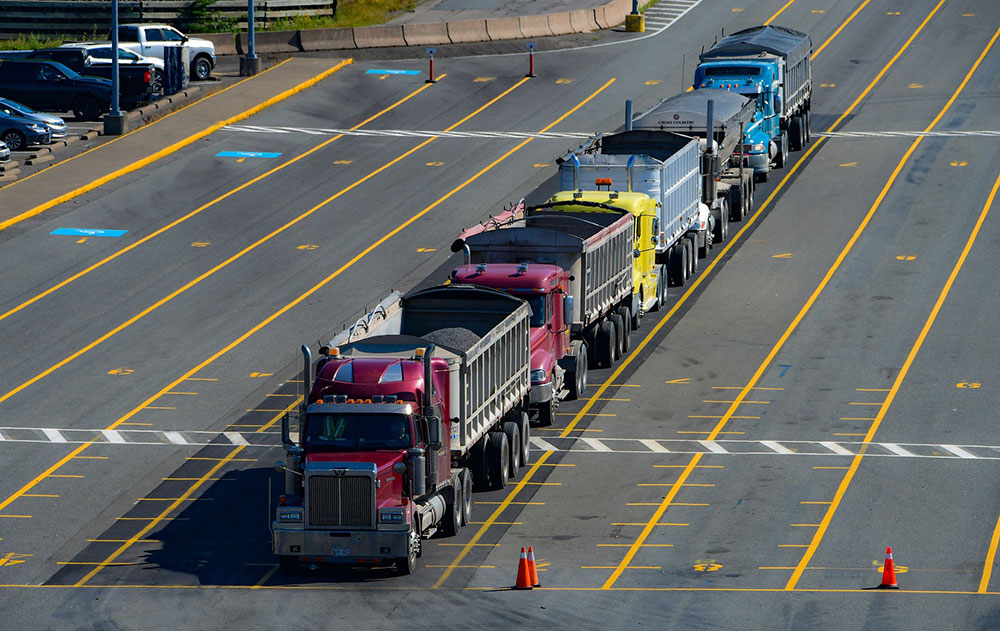Why the Trucking Industry Will Continue to Grow in 2019

In recent years, the trucking industry has experienced an increased growth rate, and according to forecasts from the American Trucking Associations (ATA), that progress will continue in 2019. The ATA also forecasts that transport needs will continue to grow over the course of the next eight years.
With the economy on a healthy upswing, the need for transportation of goods is at an all-time high because with this, factories are producing more, the construction industry is building more houses faster and people are spending more money. All of this creates more freight demand.
The growth of the trucking industry has been consistent for the past few years, with a 5.4% increase in 2018. Then, in 2017, more than 75% of the freight revenue generated in the United States was done through the trucking industry, which totaled over seven hundred billion dollars; a 3.5% increase from 2016. It has been a great time for the industry as a whole and experts in the industry forecast its continuation well into the New Year.

Economic Growth/Boom Doesn’t Happen Without Truckers
In regard to economic growth this is great news and with ecommerce businesses continually opening, the manufacturing industry is booming. However, with the trucking industry being the primary source for delivery of goods, the truck driver shortage poses the risk for other issues. The ATA President Chris Spear expressed, “the trucking industry is literally the driving force behind our great economy.” In 2018, the trucking industry enjoyed more than a four percent growth margin. And while the projections for growth in 2019 are expected to be somewhere between 2 and 3 percent, it is less. What’s causing the anticipated decrease? The possible changes in trade agreements, rate increases and the ongoing truck driver shortage.

Truck Driver Shortage
The driver shortage has been an issue for the past several years and is expected to worsen as more drivers reach retirement age. Currently, the trucking industry employs approximately 7.7 million people and almost half of those employees are drivers. Speculation is that by the year 2026, the trucking industry will lack at least 175,000 truck drivers.
This equates to delays in transportation of goods, which is already causing product prices to increase, as well as shipping and freight rates. Retailers and manufacturers are feeling the pressure as well. Truck drivers make conducting business possible on several levels, including keeping consumers happy with fully stocked shelves and timely deliveries.
While the driver shortage is hindering transport, there are other areas within the trucking industry that could benefit from some changes. These changes would help increase truck driver efficiency and productivity.
- Reduce miles driven with empty trailers: It is estimated that empty trailers are transported for almost 65 billion miles annually. Oftentimes drivers are not notified in advanced or shipment pickups and deliveries are not strategically planned out. Another instance, especially for smaller businesses, is that drivers commute long distances for a shipment or hold out for better paying options.
- Shipping docks delay drivers: More than 60% of drivers state that wait time at shipping docks is typically three or more hours. However, the industry guidelines instruct drivers to be prepared to wait no more than two hours. This is time that truck drivers are not paid but even worse, it cuts into the allotted number of hours they are allowed to drive on a daily basis.
- Coordination of broker shipments not time efficient: Freight brokers frequently arrange shipment pickups with the truck drivers. However, this requires that the broker first wins the load in negotiations and then the process of locating a driver begins. After that rates and pickup times have to be finalized. Overall the process can take up to three hours per shipment, and it is estimated that the cost of brokers accounts for at least 15% of current freight rates.
Streamlining the processes of shipment coordination and execution will save time and money for the industry. However, finding and keeping truck drivers is a major priority, which seems to be improving.

Trucking Pay to Increase in 2019
In an effort to retain current truck drivers and attract new drivers, carriers have increased wages, which apparently made a difference. During the last half of 2018, the churn rate decreased as more drivers made the decision to stay with their current carriers.
In addition to pay increases for existing drivers, new drivers are enticed by attractive salaries and hefty sign-on bonuses. Even so, the need for new drivers is critical. Job recruiters are working hard, ramping up their efforts to hire on additional drivers for the job vacancies. They are taking the initiative to market to new demographics including military and females, in order to fill the gap. Also, fleet carriers are pressuring insurance companies to lower their rates for new drivers, and lobbyists are pushing to have the driving age for commercial vehicles lowered to 18.
More Trucking Industry Changes
As with anything, change comes with pros and cons and the accelerated growth in the trucking industry is no different. From the economy boost and the trucker shortage to the shipping and freight rate increases and the revenue growth, overall it appears that the pros outweigh the cons for 2019.
When you take into account all of the variables, between driver shortages, economic growth, and regulatory HOS rules, the higher fees were caused by limitations. And, even though freight rates started to climb in 2018 and continue to do so somewhat, experts in the industry anticipate the slowing of them within the year. Why? Truck orders have been on the rise for several months. The summation of ATA chief economist, Bob Costello is that fleets plan to hire their own drivers versus contracting out. Another indicator is due to the increase of delivery needs which is affecting the trucking companies.
Trucking companies routinely measure the percentage of time their trucks are being used for hauls. Many are experiencing a 99% utilization rate, meaning that in order to keep up with delivery demands, practically every truck is being used consistently.

Market Increases Influence Trucking
Along with the delivery demands of businesses, brick and mortar and ecommerce alike, there has been a surge in other areas as well. Both the construction and housing markets are causing an escalation of deliveries largely due to rebuilding after the California fires and east coast hurricanes. Markets everywhere are benefitting.
More Consumer Purchases = More Work for Truckers
Let’s not forget about the consumers who are also buying more often. The convenience of online shopping makes it easy to purchase more items without the hassle of picking them up. Again, those deliveries are made possible through the trucking industry; a major player in the status of the economy. The trucking industry is off to a good start for continued growth in 2019 and beyond.
Don’t Miss Out
You can stay up to date on all of the latest news and information regarding the trucking industry when you sign up for the Suppose U Drive newsletter. For updates, special offers and insider information visit our newsletter signup page.

